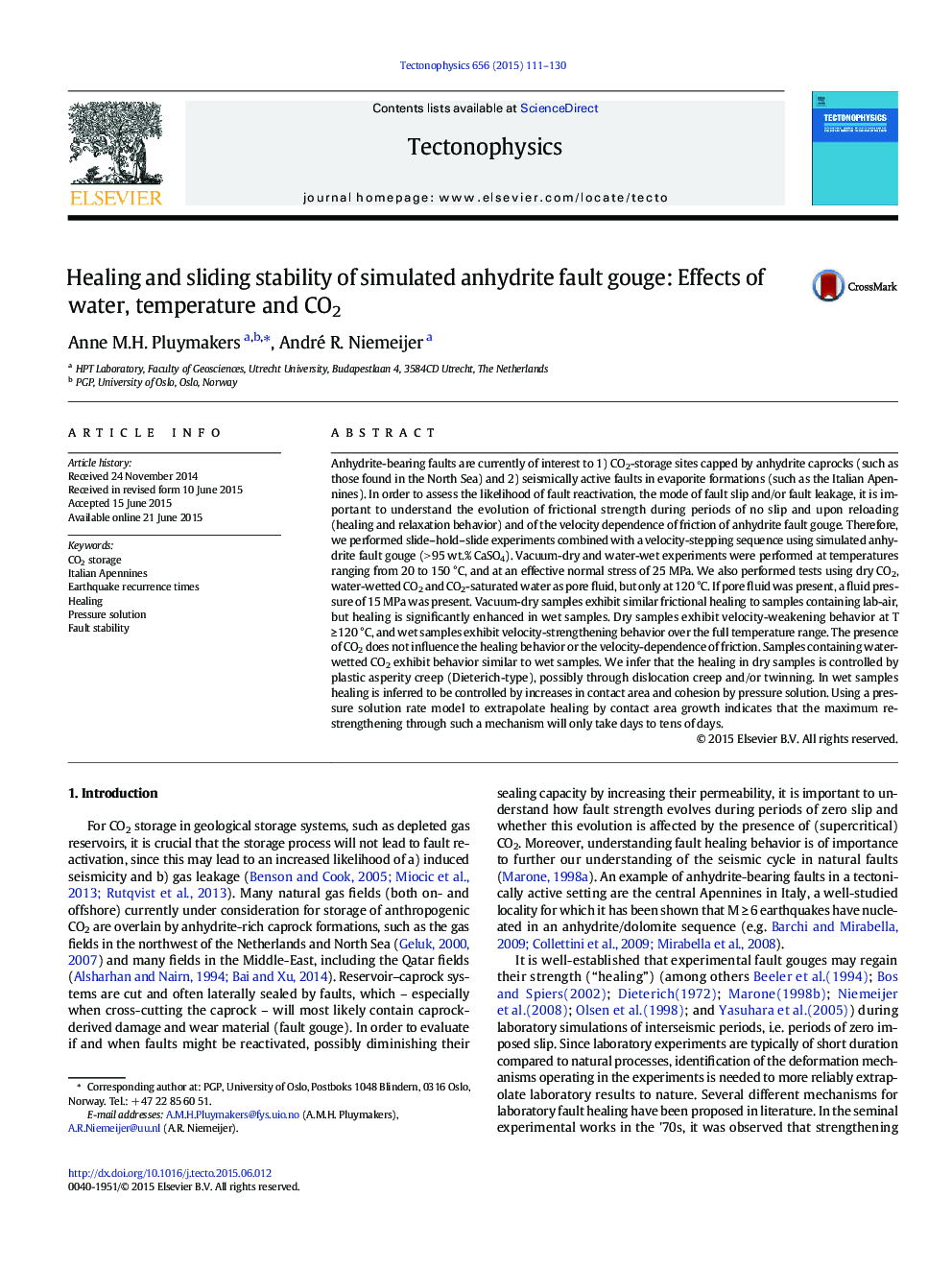| کد مقاله | کد نشریه | سال انتشار | مقاله انگلیسی | نسخه تمام متن |
|---|---|---|---|---|
| 4691605 | 1636739 | 2015 | 20 صفحه PDF | دانلود رایگان |

• We report slide–hold–slide shear experiments on anhydrite at T = 20–150 °C and 25 MPa.
• Gouges tested under vacuum show measurable healing, but 5–20 × less than wet gouges.
• We infer asperity creep in dry samples and pressure solution in wet samples.
• Holds may change sliding strength and (a-b) by cohesion and/or localization.
• The presence of CO2 does not effect healing and velocity dependence.
Anhydrite-bearing faults are currently of interest to 1) CO2-storage sites capped by anhydrite caprocks (such as those found in the North Sea) and 2) seismically active faults in evaporite formations (such as the Italian Apennines). In order to assess the likelihood of fault reactivation, the mode of fault slip and/or fault leakage, it is important to understand the evolution of frictional strength during periods of no slip and upon reloading (healing and relaxation behavior) and of the velocity dependence of friction of anhydrite fault gouge. Therefore, we performed slide–hold–slide experiments combined with a velocity-stepping sequence using simulated anhydrite fault gouge (> 95 wt.% CaSO4). Vacuum-dry and water-wet experiments were performed at temperatures ranging from 20 to 150 °C, and at an effective normal stress of 25 MPa. We also performed tests using dry CO2, water-wetted CO2 and CO2-saturated water as pore fluid, but only at 120 °C. If pore fluid was present, a fluid pressure of 15 MPa was present. Vacuum-dry samples exhibit similar frictional healing to samples containing lab-air, but healing is significantly enhanced in wet samples. Dry samples exhibit velocity-weakening behavior at T ≥ 120 °C, and wet samples exhibit velocity-strengthening behavior over the full temperature range. The presence of CO2 does not influence the healing behavior or the velocity-dependence of friction. Samples containing water-wetted CO2 exhibit behavior similar to wet samples. We infer that the healing in dry samples is controlled by plastic asperity creep (Dieterich-type), possibly through dislocation creep and/or twinning. In wet samples healing is inferred to be controlled by increases in contact area and cohesion by pressure solution. Using a pressure solution rate model to extrapolate healing by contact area growth indicates that the maximum re-strengthening through such a mechanism will only take days to tens of days.
Journal: Tectonophysics - Volume 656, 12 August 2015, Pages 111–130